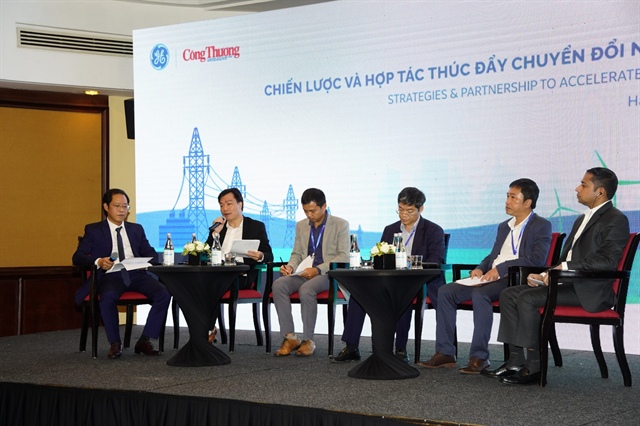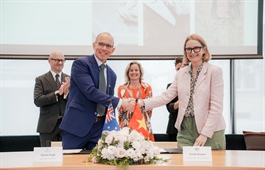Energy transition targets sustainable development
Energy transition targets sustainable development
To develop a green and sustainable economy and adapt to climate change, Vietnam has been accelerating energy transition by promoting lower-carbon emissions and enhancing international cooperation.

Vietnam has great potential for renewable energy development |
Greening power system
In the 2011-2020 period, Vietnam’s commercial electricity achieved an average growth rate of 9.6 percent per year. The figure is expected to reach 8.52 percent in a base-line scenario and 9.36 percent in an optimistic scenario during the 2021-2030 period. Vietnam’s total installed power capacity reached 76,620MW by the end of 2021, the highest in the Southeast Asian region. Of the total, the installed capacity of hydroelectricity, coal-fired power, gas-fired power and renewable energy reached 22,111MW, 25,397MW, 7,398MW, and 21,100MW, respectively.
Addressing a June 22 seminar on strategies and partnership to accelerate Vietnam’s energy transition, Hoang Tien Dung, director of the Electricity and Renewable Energy Authority under the Ministry of Industry and Trade, said Vietnam had devised many mechanisms and policies to achieve the goal of sustainable energy transition and complete its commitment to net-zero emissions by 2050.
As a management agency of the power sector, the Ministry of Industry and Trade has advised the government on the development of mechanisms and policies on energy and electricity, while directing corporations and enterprises to ensure national energy security. In particular, in the draft Power Development Plan VIII, the Ministry of Industry and Trade has made significant changes to the structure of energy sources and the designation of power development space in line with Vietnam’s strong commitments at the 26th United Nations Climate Change Conference (COP26) last year in Glasgow.

A seminar on energy transition held in Hanoi on June 22 |
Five main pillars
Vietnam’s energy consumption increased at an annual average rate of 3.6 percent in the 2019-2021 period. The country’s electricity production reached 111,205 million kWh in the first half of 2022.
Nguyen Tai Anh, deputy general director of the Vietnam Electricity (EVN), said about 500 billion kWh will be needed by 2030 to supply sufficient power for socioeconomic development.
Dr. Nguyen Ngoc Hung, head of the Energy Economics Department under the Ministry of Industry and Trade’s Institute of Energy, said that to achieve success in energy transition, Vietnam needs to implement five main pillars. These include using energy economically and efficiently through changing usage behavior and improving usage performance; conducting electrification through increasing the proportion of electric vehicles; developing renewable energy; strengthening hydrogen fuel and hydrogen-based fuel; and boosting lower-carbon energy sources.
Narendra Asnani, director for Services at GE Gas Power in Asia, said lower-carbon energy sources like gas and such solutions as hydrogen and carbon capture technologies can help Vietnam achieve carbon neutrality. GE is providing suitable solutions and global experience for Vietnam to meet current demand and sustain growth, he said.
In an in-depth discussion, representatives from the Institute of Energy, the US Agency for International Development, EVN, T&T and GE proposed several measures for boosting energy transition in Vietnam.
| Coal-fired power makes up one-third of Vietnam’s total output. The country looks to reduce the proportion of this type of electricity to about 9.5 percent and raise renewable energy to 32 percent by 2045. |

























